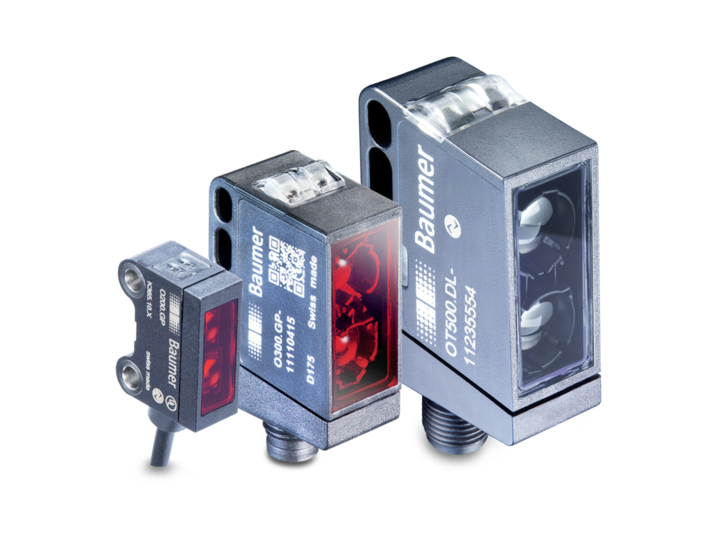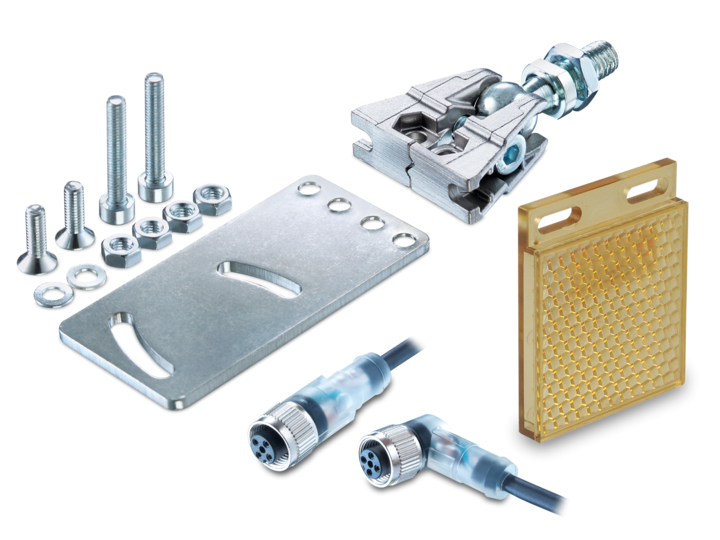Product portfolio
Cylindrical fiber optics
Square fiber optics
Miniaturized fiber optics
Specialized fiber optics
Plastic fiber optic sensors
Glass fiber optic sensors
Advantages and application areas of fiber optic sensors and fiber optics
Smaller, more precise, faster
Plug & play
Better performance
Robust against mechanical and thermal influences
Robust against aggressive media
How does a fiber optic sensor work?
A fiber optic sensor and two fiber optics made of plastic or glass fibers make up a fiber optic system. The sensor contains a light source (transmitter), typically an LED, and a photodiode (receiver). The generated light is guided through an optical fiber (transmission path) to the object to be detected. The light reflected by the object is returned to the receiver through the second fiber (receive path). The amount of reflected light respectively the change in light intensity is used to detect the presence of the object or to determine the properties of the object.
Types of fiber optic sensors

Through-beam sensors: Through-beam sensors detect when an object interrupts the light beam between the transmitter and receiver.
Diffuse sensors: With a diffuse sensor with intensity difference, the amount of light (light intensity) remitted by the object is evaluated. The reflective properties such as the surface texture, color or gloss of an object have a major influence on the light intensity.
The selection of the right fiber optic sensor and the suitable fiber optics are crucial for reliable object detection even under demanding environmental conditions.
Types of fiber optics
Plastic fiber optics:
Plastic fiber optics are composed of plastic fibers, typically PMMA (polymethyl methacrylate). These fibers are incredibly light, flexible, and bendable, so that they can also be used with extremely small bending radii of up to 1 mm. Highly flexible plastic fibers are especially suitable for applications with dynamic bending loads, such as in cable carrier applications. Plastic optical fibers are mainly used for transmitting visible light and are an economical and flexible solution.
Glass fiber optics:
Glass fiber optics are often made from high-purity quartz glass. They are characterized by low signal attenuation, which allows for efficient light transmission over long distances. Additionally, glass fiber optics can transmit a very broad spectrum of visible, infrared, and ultraviolet light. Glass is a high-quality material that offers excellent thermal and chemical resistance, as well as durability against moisture and UV radiation. Glass fiber optics are the preferred solution in challenging environmental conditions.
















